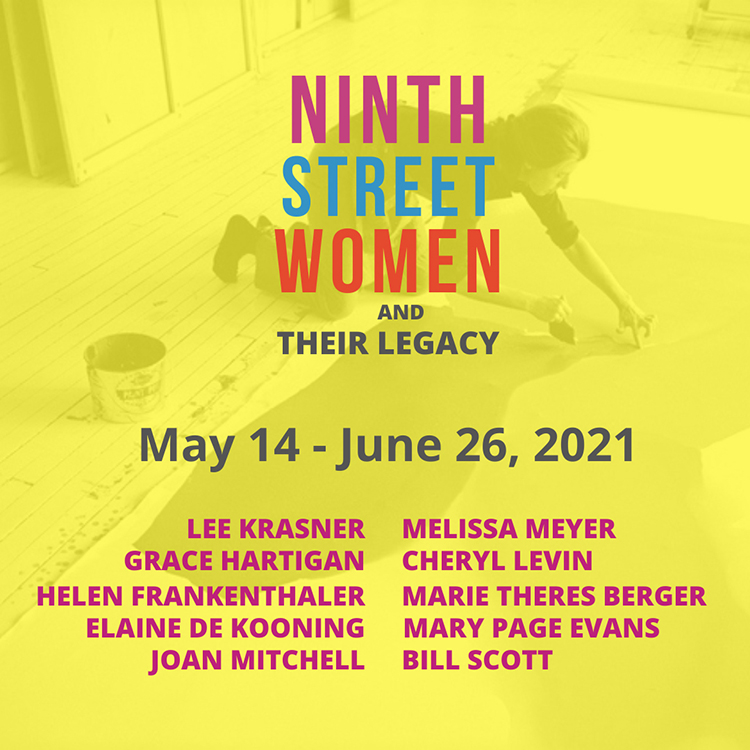Exhibition

News

About
Elaine Fried de Kooning was an artist, writer, and wife during the heyday of Abstract Expressionism. Being a painter came first, yet her relationship to one of the dominant figures of the movement shaped her existence. She was a twenty-year old art student in 1938 when she first met Willem de Kooning, the Dutch painter sixteen years her senior. Elaine’s boyfriend at the time, Milton Resnick, claimed Bill de Kooning “seduced her by teaching her art.” She subsequently became de Kooning’s model and the inspiration for his famous paintings of women. They were married in 1943.
As a child, Elaine Fried, a native of Brooklyn, New York, made regular visits to the Metropolitan Museum of Art. At Erasmus High School, she excelled in writing and math, but after a few weeks at Hunter College in Manhattan she dropped out to study at the Leonardo da Vinci Art School and the American Artists School.
In the spring of 1948, the de Koonings were struggling to make ends meet. When an invitation came from Josef Albers to teach at his experimental program near Asheville, North Carolina, they jumped at the chance. The couple thrived at Black Mountain College, especially Elaine who took classes with Albers, Buckminster Fuller, and Merce Cunningham. She was actively involved in the social life of the college, participated in theatrical performances, and painted bold organic abstractions on wrapping paper with enamel paint.
De Kooning became a writer for the influential magazine Art News in 1948. Over the next forty years as a contributor, she ran a series of articles in which she described artists at work—a novel approach in art criticism, as was her positive tone. As a fellow artist, she had access to individuals creating in a broad range of styles and shared a unique rapport with her subjects, who included Albers, Andrew Wyeth, Arshile Gorky, Franz Kline, Hans Hofmann, and Edwin Dickinson.
In her own work, de Kooning vacillated between complete abstraction and representational imagery. A respected portrait painter, she was at work on a commission of her most famous subject, President John F. Kennedy, at the time of his assassination in 1963. De Kooning worked almost obsessively in series that dealt with such subjects as faceless men, bullfighters, Bacchus, cave paintings, and Sumi drawings.
Vivacious and energetic, Elaine de Kooning was a full participant in the heady and collegial environment of New York’s art scene, which included weekly discussions, lectures, and parties. Although frequently overshadowed by her husband and their tumultuous relationship, she successfully gained recognition for herself. Her 1954 one-artist exhibition at the Stable Gallery was the first of over fifty solo and group exhibitions in the United States, many occurring during the halcyon days of the feminist movement and after she turned sixty. She held numerous teaching positions; from 1957 to 1962 she was at the University of New Mexico, and later taught at the University of Georgia (as the Lamar Dodd Visiting Professor of Art), Carnegie Mellon Institute, the University of Pennsylvania, and Yale University graduate school. Elaine de Kooning’s work is represented in the permanent collections of the Metropolitan Museum of Art, National Portrait Gallery, Guggenheim Museum, and the National Museum of Women in the Arts.
The Johnson Collection, Spartanburg, South Carolina
Exhibitions with Somerville Manning Gallery
2021 Ninth Street Women and Their Legacy
Selected Public Collections
The Museum of Modern Art, New York, NY
The Solomon R. Guggenheim Museum, New York, NY
The Metropolitan Museum of Art, New York, NY
The Denver Art Museum, Denver, CO
The National Academy Museum and School, New York, NY
The Los Angeles County Museum of Art (LACMA), Los Angeles, CA
The National Portrait Gallery, Washington, D.C.
Guild Hall Center for the Visual and Performing Arts, East Hampton, Long Island, NY
The National Museum of Women in the Arts, Washington, D.C.